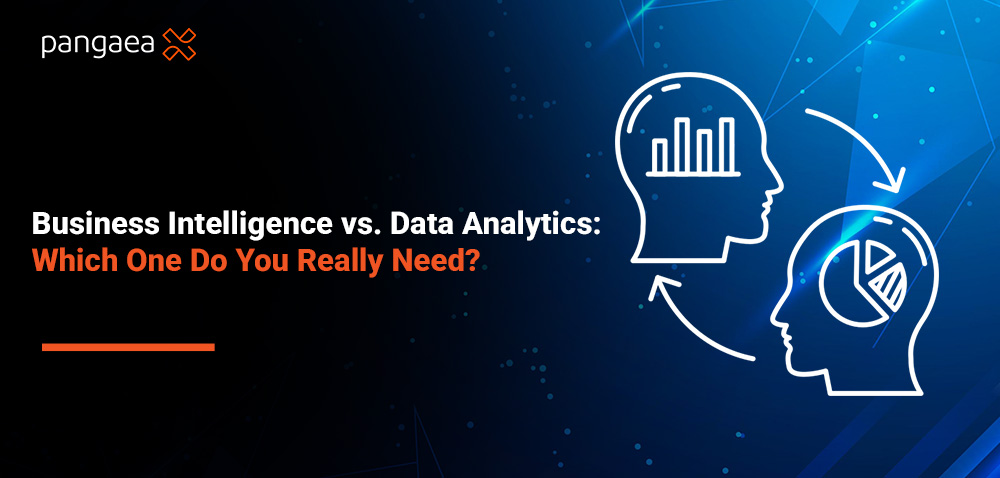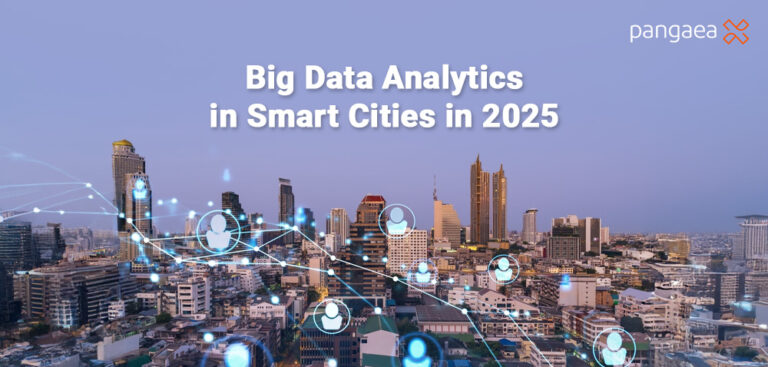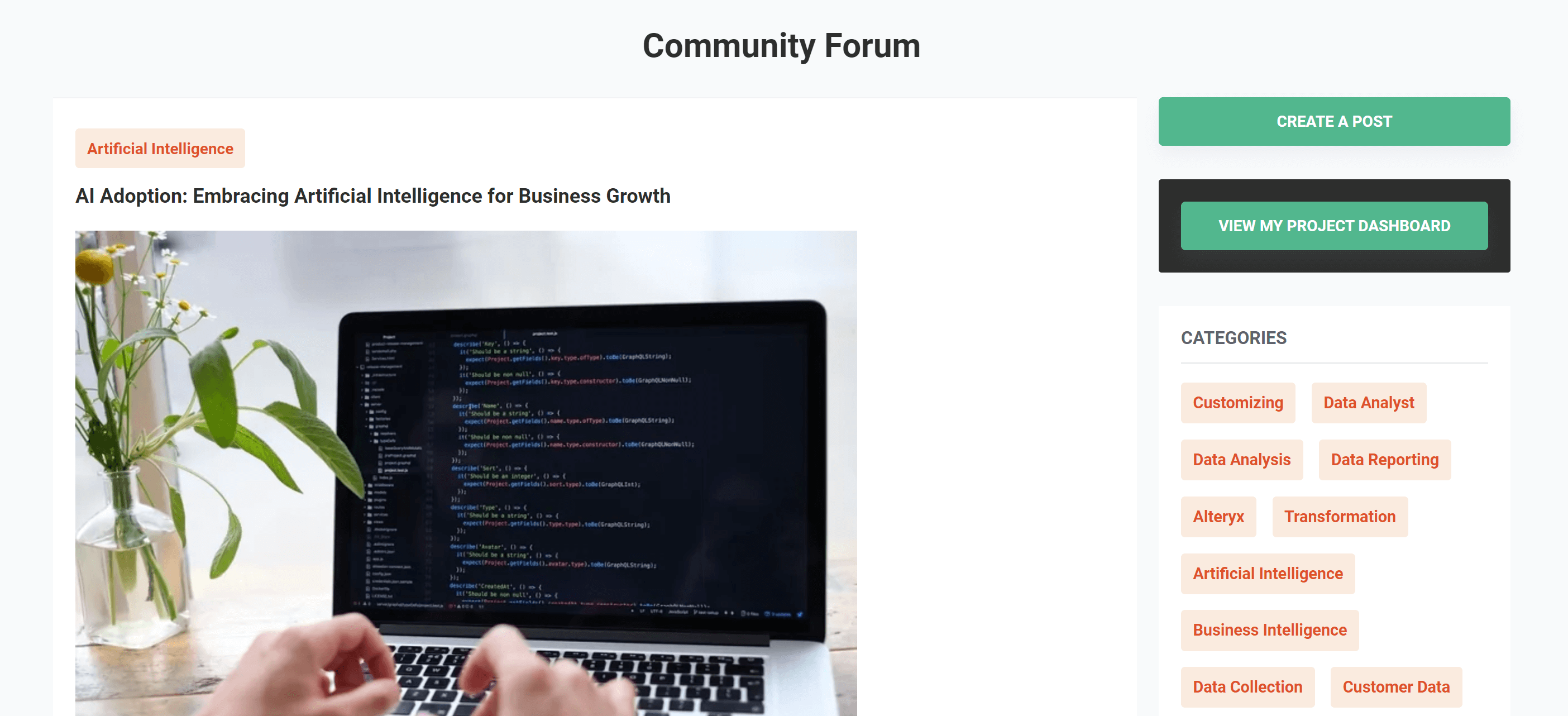Business Intelligence vs. Data Analytics: Which One Do You Really Need?

Introduction
Business Intelligence (BI) and Data Analytics are often used interchangeably in modern organizations, but they represent distinct disciplines with different goals, tools, and outcomes. This common confusion can result in hiring the wrong expert, underutilizing data platforms, or making decisions without the proper analytical foundation.
If you’re evaluating freelance talent or deciding what kind of data support your business needs, this guide will help you draw a clear line between BI and analytics. We’ll walk you through what each does, how they’re used, and how to decide which is the best fit for your company today.
What Is Business Intelligence?
BI shows what happened through dashboards and reports.
Business Intelligence refers to technologies, processes, and practices that collect, process, and display historical data so stakeholders can understand and monitor business performance. It answers questions like, “What happened last quarter?” or “How are we doing against our targets?”
Core BI Tasks
- KPI Tracking (e.g., sales by region, churn rate)
BI systems monitor Key Performance Indicators (KPIs) across different dimensions. For example, you might use BI to break down quarterly sales by region or monitor customer churn by product category. This allows business leaders to benchmark progress and identify areas that need attention.
- Scheduled Executive Summaries
Many BI setups include automated reports that are scheduled to be delivered weekly or monthly to executives and managers. These typically summarize critical metrics like revenue, acquisition, retention, and costs—providing a high-level overview without the need for manual intervention.
- Custom Dashboards
Dashboards provide visual representations of metrics and trends. While tools like Power BI and Looker are commonly used, the main function is to make data digestible. A well-constructed dashboard may include filters, drill-down options, and real-time data refresh, tailored to roles like marketing, finance, or operations.
- Ad Hoc Querying Performance Overviews
BI tools allow users (often with SQL proficiency) to run on-demand queries on structured datasets. For example, a sales manager might request a performance comparison between Q2 and Q3 filtered by territory and product line, using a drag-and-drop interface or direct SQL access.
Common Deliverables from BI Freelancers
- Role-based Dashboards: Tailored dashboards built for specific stakeholders (e.g., sales, marketing, operations) that highlight relevant KPIs and trends.
- Executive Summaries: Compiled reports designed for C-suite consumption, presenting only the most strategic data points in a clean, concise format.
- SQL Views and Data Extracts: Prebuilt queries and datasets optimized for reuse, often feeding other reporting tools or exported for offline analysis.
- Data Warehouse Schema Designs: Logical structuring of how data tables relate to each other in a warehouse, ensuring scalability and performance for reporting systems.
In essence, BI turns raw data into organized, understandable views that help stakeholders keep track of what’s happening in the business.
What Is Data Analytics?
Analytics uncovers why things happen and predicts what’s next.
Data Analytics involves the exploration, interpretation, and modeling of data to uncover trends, generate insights, and support decision-making. It goes beyond simply reporting what happened, it tries to answer why it happened and what might happen next.
Common Data Analytics Tasks
- Predictive Modeling
Analysts use statistical or machine learning models to forecast outcomes. For example, they might predict customer churn, estimate sales for the next quarter, or identify the probability of loan default.
- A/B Testing
This involves controlled experiments to test hypotheses. A typical use case is comparing two versions of a webpage to determine which leads to better conversion rates. Freelancers might design the experiment, ensure statistical validity, and interpret the results.
- Statistical Analysis
Analysts perform correlation analysis, regression modeling, and hypothesis testing to understand relationships within the data. For example, they may analyze the impact of pricing changes on customer retention.
- Customer Segmentation
By analyzing behavioral and demographic data, data analysts can divide users into segments (e.g., frequent buyers, price-sensitive customers) to personalize marketing or optimize service delivery.
- Anomaly Detection
In domains like fraud detection or system monitoring, analysts build models that flag data points that deviate from expected patterns, helping teams take proactive action.
Common Deliverables from Analytics Freelancers
- Forecasting Models: Predictive tools developed using time-series or regression techniques to help businesses plan for future scenarios.
- Segmentation Maps and Personas: Visual and descriptive breakdowns of user or customer groups, often tied to targeted campaigns or service improvements.
- Analytical Reports with Actionable Insights: In-depth documents that interpret data findings and provide clear recommendations for business teams.
- Python/R Notebooks with Reproducible Code: Technical deliverables that combine narrative, code, and results in a single document—often handed off to data teams for ongoing iteration.
Data analytics is best when you’re navigating uncertainty, exploring strategic questions, or identifying patterns you didn’t know to look for.
Business Intelligence vs. Data Analytics: What’s the Key Difference?
Here’s how BI and Data Analytics compare across various dimensions:
| Criteria | Business Intelligence | Data Analytics |
| Time Orientation | Past and Present | Present and Future |
| Primary Goal | Reporting and monitoring performance | Exploring patterns, making predictions |
| Tools Used | Power BI, Tableau, Looker | Python, R, SQL, Jupyter, Scikit-learn |
| Deliverables | Dashboards, Reports, KPI tracking | Forecasts, Segments, Predictive Models |
| Skill Sets Required | SQL, ETL, Data Warehousing | Statistics, Machine Learning, Scripting |
| Decision Support | Descriptive and operational | Diagnostic and predictive |
Understanding these differences can help you build more efficient teams and avoid role confusion when hiring data talent. Choosing the wrong expert could lead to mismatched expectations such as expecting predictive insights from a BI dashboard or requesting reporting dashboards from a statistical modeler.
Being precise about what you need not only ensures successful project outcomes but also makes onboarding freelancers faster, smoother, and more cost-effective.
Which One Do You Need? Use Cases by Business Stage
The right approach to data depends heavily on where your business is in its growth journey. Here’s a breakdown by stage:
Early-Stage Startups
- Use BI to Build Visibility
Early startups need visibility into operational performance: traffic sources, acquisition costs, churn rate, and basic unit economics. BI helps founders and lean teams align around the same metrics without building complex data systems. A freelancer can set up lightweight dashboards and reports connected to cloud tools or spreadsheets.
Growth-Stage Companies
- Use Analytics to Optimize Strategy
With product-market fit and active users, growth-stage companies need deeper insights. Data analytics helps answer strategic questions like “Which user segment converts best?” or “What pricing tier drives retention?” Freelancers at this stage build models, run experiments, and surface insights that directly impact growth metrics.
Enterprises
- Use BI + Analytics for Scalable Insight
Enterprises rely on both BI and analytics in tandem. BI ensures operational excellence by reporting on thousands of KPIs across departments. Meanwhile, data analysts and scientists perform advanced forecasting, build optimization models, and work closely with data engineering teams to scale insights organization-wide.
Takeaway:
- If your business decisions rely on knowing what happened and when, start with Business Intelligence.
- If you’re focused on why things happen and what to do next, you’ll benefit from Data Analytics.
How to Choose the Right Freelance Expert
With a clear understanding of your goals, it becomes easier to choose the right freelance data professional.
When to hire a BI freelancer:
- You need clear, visual dashboards for stakeholders.
- You’re consolidating multiple data sources (CRM, finance, web analytics) into a unified reporting layer.
- You want recurring automated reports delivered to decision-makers.
BI freelancers excel at data organization, data visualization, and supporting operational efficiency.
When to hire a data analyst or data scientist:
- You need to make data-driven predictions (e.g., churn, sales, demand).
- You’re testing hypotheses or optimizing user experiences.
- You require segmentation, customer personas, or attribution models.
Analytics freelancers bring strong statistical and coding backgrounds and are ideal for research-driven or product-led organizations.
When a hybrid expert makes sense:
- You’re building a full-stack data workflow from ETL to dashboards to predictive modeling.
- Your team lacks internal data literacy, and you want one expert to cover both reporting and insights.
- You’re on a budget and need one person to build initial infrastructure and grow with your data needs.
Final Verdict: BI or Data Analytics?
Pick BI for operational tracking; analytics for insights and forecasts.
Whether you need crystal-clear dashboards or complex predictive insights, choosing between BI and analytics is a strategic decision not just a technical one.
Start by identifying the types of questions your business needs to answer. Then, hire the right freelance expert to match those goals. Clarity here helps prevent scope creep, reduces costs, and drives faster outcomes.
At Pangaea X, you’ll find pre-vetted BI and analytics freelancers with proven expertise across industries. Whether you’re ready to post a project or just exploring what’s possible, our platform helps you connect with the right talent and the right tools to move forward confidently.
FAQs: BI vs. Data Analytics
- What is the main difference between BI and data analytics?
Business Intelligence focuses on past performance monitoring, while Data Analytics explores patterns and predicts future trends.
- Which is better for decision-making: BI or data analytics?
Use BI for real-time reporting and operational decisions; choose data analytics for insights and predictive modeling.
- When should a business use Business Intelligence?
BI is ideal for tracking KPIs, automating reports, and visualizing operational data across departments.
- When do companies need data analytics instead of BI?
Businesses need analytics when they seek to uncover trends, predict outcomes, or run A/B tests and statistical models.
- What tools are commonly used in BI and data analytics?
BI tools include Power BI, Tableau, and Looker. Data analytics tools include Python, R, SQL, and Jupyter.
- Can a freelancer handle both BI and data analytics?
Yes, hybrid freelancers can manage both dashboard reporting and predictive modeling, especially in early-stage setups.
- Is it necessary to hire different experts for BI and analytics?
Not always. For mature businesses, specialized roles make sense. Startups may benefit from full-stack data freelancers.
- What deliverables should I expect from a BI freelancer?
Common deliverables include executive dashboards, recurring reports, data models, and schema designs.
- What are typical outputs from a data analytics freelancer?
Expect forecasting models, customer segmentation, statistical reports, and reproducible code in Python or R.
- Where can I hire BI or analytics freelancers with proven expertise?
Pangaea X connect you with pre-vetted data professionals across BI and analytics domains.
Get your data results fast and accelerate your business performance with the insights you need today.



